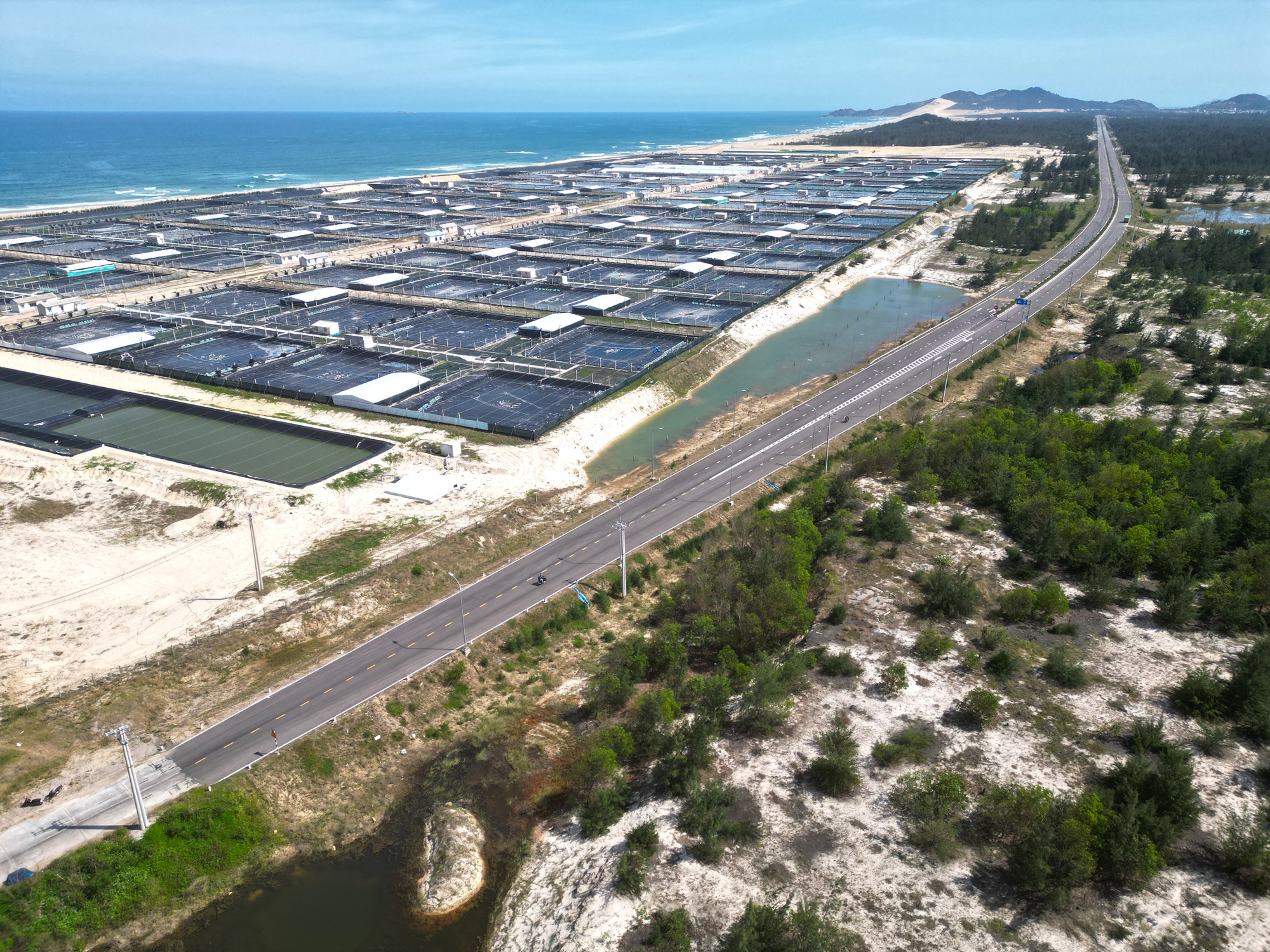At the end of May, the Green AIoT system was introduced to farmers in Ba Ria - Vung Tau as an AI solution for monitoring and optimizing shrimp farming environments at an event organized by the Department of Science and Technology. Information about how AI can be integrated into the process opened up a new direction for households and units involved in this agricultural sector.
The system operates through sensors, continuously collecting data on salinity, oxygen levels, pH, and other factors that directly influence shrimp psychology and development. Data is collected in real time, then analyzed and processed by AI to detect anomalies early. The system then automatically adjusts pond equipment, such as oxygen generators, to maintain optimal levels. AI can also provide early forecasts to pond owners based on environmental conditions for appropriate adjustments.
 |
High-tech shrimp farming area along the coast in Binh Dinh. Photo: Pham Linh |
Systems using AI in shrimp farming are becoming increasingly common. In addition to Green-AIoT, many domestic and international businesses are developing solutions to support high-tech shrimp farming, increasing productivity while reducing disease and costs. This interest stems from the sector's high economic value. In 2024 alone, shrimp production reached 1.2 million tons, generating 4 billion USD in export value.
Crustea, an Indonesian aquaculture startup, is also developing a support system for farmers, targeting the Vietnamese market due to its recognized potential. This system applies AI to pond environment monitoring, predicting adverse situations early. Additionally, the AI optimizes the power consumption of oxygen pumps. Other equipment utilizes renewable energy to reduce emissions, aiming for a sustainable model.
Beyond monitoring pond conditions, AI systems are also emerging that can analyze shrimp health using data, reducing reliance on previous experience and personal observation. AI can collect indicators like gut fullness, flock distribution, and uniformity to calculate feeding efficiency and health. These products can also count the number of shrimp larvae, helping farmers accurately determine stocking density from the beginning of the season; estimate the amount of feed for shrimp at each stage for reasonable feeding plans, cost savings, and reduced environmental pollution.
According to many experts, the application of high technology will help address many concerns of shrimp farms. For instance, with smart sensors and data analysis systems, AI can provide real-time information, sent directly to personal phones - something that previously took hours, even days to check. These systems require an initial investment, but in the long run, they support increased productivity, reduced costs, and improved business efficiency.
According to a report by the Ministry of Agriculture and Environment, in 2024, the brackish water shrimp farming area was about 737,000 ha with an output of over 1.2 million tons, a 5.3% increase compared to the previous year. The Vietnam Association of Seafood Exporters and Producers (VASEP) predicts that the seafood industry will maintain its growth momentum in 2025, thanks to increased demand from regional markets. In Quarter I/2025, export value reached 939 million USD, up 37% over the same period.
Hoai Phuong












